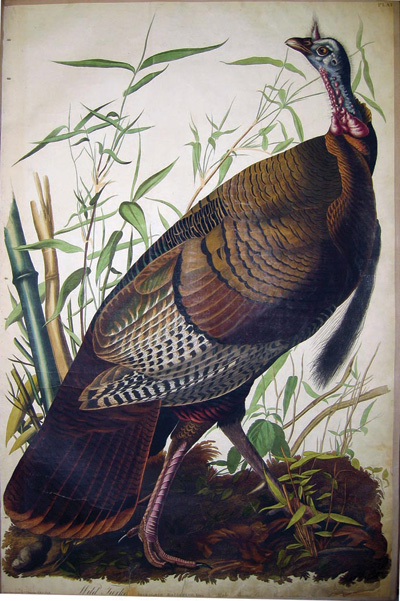It’s time to talk turkey. With Thanksgiving coming, I’d like to
defend the honor of the avian animal that can be found now so
abundantly in the meat sections of Safeway or Nob Hill
supermarkets
– as well as in the South Valley’s rugged wilderness.
It’s time to talk turkey. With Thanksgiving coming, I’d like to defend the honor of the avian animal that can be found now so abundantly in the meat sections of Safeway or Nob Hill supermarkets – as well as in the South Valley’s rugged wilderness.
Hiking at Henry Coe State Park, I’ve often seen flocks of wild turkeys strutting guardedly in their groups as they foraged through the oaks and grasslands. They are a true American success story, coming back from the edge of extinction.
When the Pilgrims landed on North America’s eastern shores, wild turkeys ranged plentiful throughout the continent. They come in five subspecies: Eastern, Osceoloa (Florida), Rio Grande, Merriam’s and Gould’s. The Europeans were astonished by the avian critters. Not used to humans, the birds were trusting and unwary and often showed a friendly curiosity toward people – much to the threat of their own survival.
Unfortunately, over hunting and the decimation of quality habitats brought the population of wild turkeys down to only 30,000 by the early years of the 20th century. But thanks to the preservation efforts of America’s hunters and the passage of the Pittman-Robertson Act of 1937 (that placed an excise tax on sport guns and ammunition, thus providing money for wildlife restoration programs), wild turkeys have grown to more than seven million today.
People often poke fun of turkeys as stupid animals. And much of this public perception is due to the fact that most folks have only seen the domesticated version of the bird. Gobblers raised on farms have been genetically modified by selective breeding to produce much more meat for the consumers to gobble down during the holidays and other occasions. The adults have a gross breast development that hampers their mobility.
Because they pack on lot of weight, farm turkeys have the famous tendency to waddle as they walk. That has given them the image of being rather slow and stupid. The weight also keeps them ground bound. Ranch-raised turkeys would not be able to survive long in the wilderness compared with their wild cousins. A wild turkey can run as fast as 25 mph and can fly up to 55 mph.
One of America’s founding fathers admired turkeys so much that he proposed that they become the national symbol. In a letter written from France to his daughter Sally and dated January 26, 1784, Ben Franklin made these observations about the recently introduced Great Seal of the United States:
“I wish the Bald Eagle had not been chosen the Representative of our Country. He is a Bird of bad moral Character. He does not get his Living honestly. You may have seen him perched on some dead Tree near the River, where, too lazy to fish for himself, he watches the Labour of the Fishing Hawk; and when that diligent Bird has at length taken a Fish, and is bearing it to his Nest for the Support of his Mate and young Ones, the Bald Eagle pursues him and takes it from him.”
Franklin then suggested that the bald eagle on the seal would be better replaced with the turkey. “For the Truth the Turkey is in Comparison a much more respectable Bird, and withal a true original Native of America … He is besides, though a little vain & silly, a Bird of Courage, and would not hesitate to attack a Grenadier of the British Guards who should presume to invade his Farm Yard with a red Coat on.”
No doubt, Franklin was writing in jest. And perhaps it might be a good thing that early Americans did not decide on the turkey as their national symbol. Considering how many citizens have pushed forward an amendment banning flag desecration, no doubt if the turkey was on the Great Seal, there would have been in recent years some attempt to pass a constitutional amendment prohibiting the consumption of turkeys as a similar sacrilege. And then where would Thanksgiving Day be?
Avian scientists are also finding out that turkeys have a far more complex brain – and therefore intelligence – than was once thought. In fact, according to a 2005 report on bird neuroscience, turkeys and other birds have evolved to possess an intricately wired brain that lets them process information in much the same way as the cerebral cortex in human beings. Not that there will ever be a turkey Einstein, of course, but turkeys do have a much higher I.Q. than we previously gave them credit for.
So, this Thursday as you cut into a delicious steaming slice of hot roasted turkey, consider the history of this fine-feathered animal and how it has become such an important part of our holiday seasons. Turkeys are definitely something to talk about at the table this Thanksgiving.










